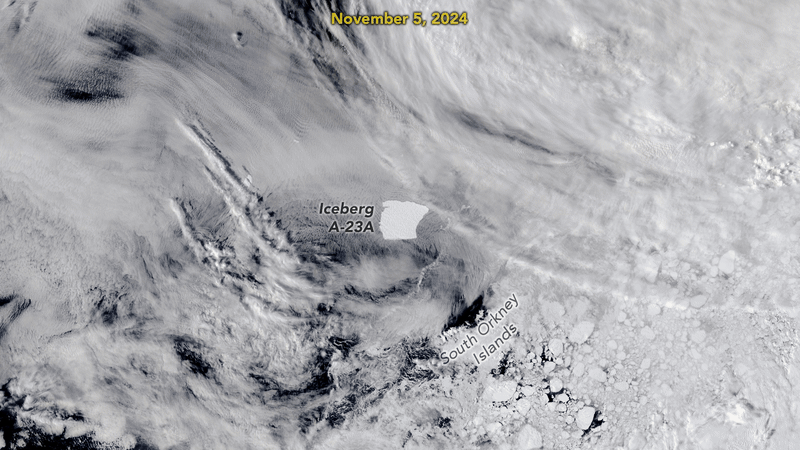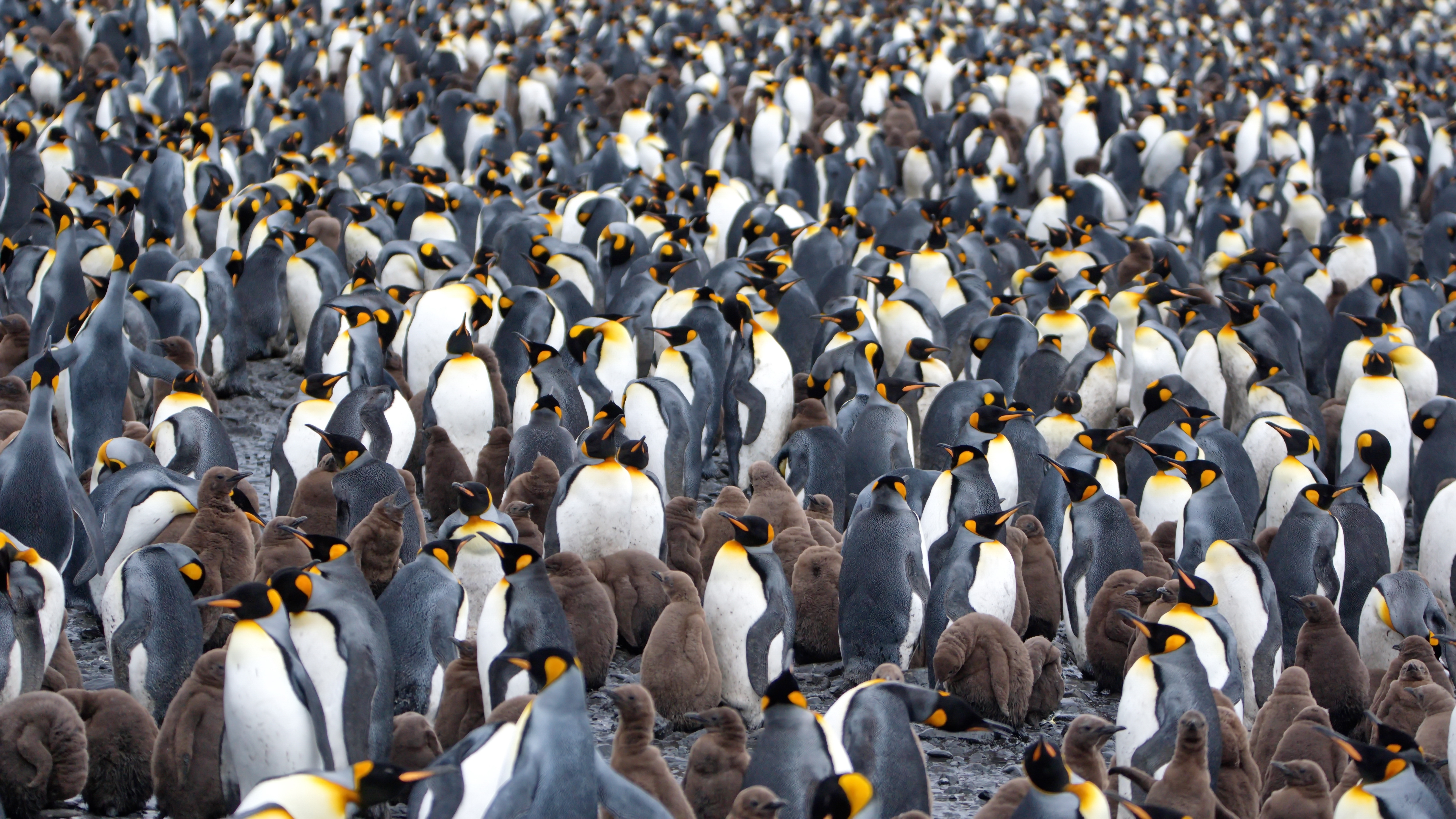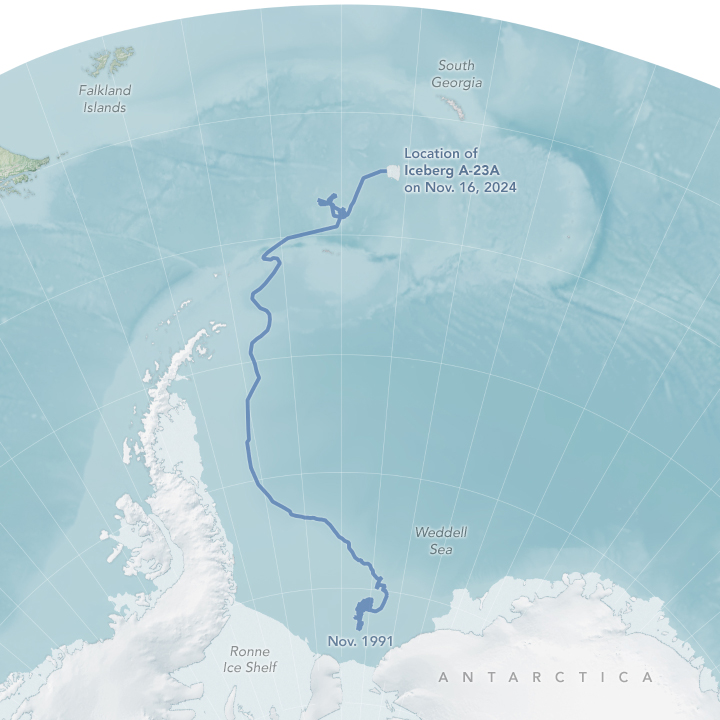The world’s largest iceberg may soon not be. After a more than two-year-long adventure away from its home in Antarctica, new satellite photos have shown that the “megaberg” A-23A is starting to break into thousands of smaller pieces – resulting in what NASA describes as “a scene reminiscent of a dark starry night.”
It’s a sad – though all-but-unavoidable – end to a decades-long journey. Despite sounding like it was named by Elon Musk, A-23A is firmly millennial: it first calved from the Filchner Ice Shelf back in 1986. It didn’t go far, though: for nearly 40 years, it remained in the shadow of its mother, being stuck on the ocean floor in the southern Weddell Sea.
But it was in 2023, once it finally wriggled free, that A-23A really started making a name for itself. Rather than take the normal route for escapee bergs – following the so-called “iceberg alley” which takes more than 90 percent of Antarctic icebergs clockwise and then north into the South Atlantic – A-23A took a path that, according to NASA, was “quite out of the norm.”
Why? Well, because it was pirouetting.

The motion of the iceberg, tracked between November 5 and December 16, 2024.
Image credit: NASA Earth Observatory images by Lauren Dauphin, using MODIS data from NASA EOSDIS LANCE and GIBS/Worldview, VIIRS data from NASA EOSDIS LANCE, GIBS/Worldview, and the Suomi National Polar-orbiting Partnership, and the Joint Polar Satellite System (JPSS)
“For about eight months, the berg rotated tightly within the Taylor column about 200 kilometers (120 miles) north of the South Orkney Islands,” NASA reported at the time. “A-23A made 15 revolutions between March and November 2024” – movements that experts like Jan Lieser, from the Antarctic Meteorological Service, said made the berg unique in the history books.
But nobody can spin forever, and in mid-November, A-23A escaped its vortex somehow – “my hypothesis is that a random perturbation in the system might have triggered a slight variation of the ‘usual’ spin, such that the iceberg found an exit path,” Lieser suggested. From there, it sped off at top speeds, glacially speaking: in the month after exiting the vortex, it traveled about 240 kilometers (150 miles) on its journey northeast, giving an average of about 8 kilometers (5 miles) a day.
Unfortunately, the further you get from Antarctica, the harder it gets to – well, to remain an iceberg. By March 2025, A-23A had reached the warmer waters of the South Atlantic, parking itself less than 100 kilometers (60 miles) away from the penguin haven of South Georgia.

A common sight on the island of South Georgia.
Image credit: Angela N Perryman/Shutterstock.com
While it’s not moved from that spot – “the berg’s underside is most likely lodged on a shallow underwater shelf around South Georgia, known in the past to have snagged several Antarctic icebergs on their northward drift into warmer South Atlantic waters,” NASA explains – it has changed dramatically in its two months or so in the area. “According to iceberg data from the US National Ice Center (USNIC), A-23A lost more than 360 square kilometers (140 square miles) between March 6 and May 3,” says NASA – an area it notes is “roughly twice the size of Washington, D.C.”
It’s not the first time A-23A has lost ice on its journey – some was shed while it was spinning, for example – but it’s now a sign that the berg is in its twilight era. “Notice the strip of icy debris along its northern side, which is the remnants of a sudden ‘edge wasting’ event triggered in part by several days of warm, sunny weather,” points out NASA. “At nearly 55°S latitude, the berg is well outside the coldest waters around Antarctica that helped preserve it since it calved.”

A visual of the journey taken by iceberg A-23A between 1991 and November 2024.
Image credit: NASA Earth Observatory, using data from the Antarctic Iceberg Tracking Database and the US National Ice Center (USNIC)
Basically, the berg is eroding from the edge inwards – keeping its shape, but becoming smaller overall. That spells trouble for A-23A’s current record-breaking area: while it’s still the biggest berg on the books for now, as of May 16 it’s only 29.2 square kilometers (11.3 square miles) larger than its closest competitor, D15A.
So, while such a huge iceberg will take months, if not years, to completely disappear, the disarmingly beautiful scattering of ice is a sign that A-23A’s end is now “all but certain,” NASA confirmed.
“More than 90 percent of icebergs around Antarctica follow a similar route,” the agency said. “All of them eventually melted away.”
Source Link: World's Largest Iceberg Set To Lose Its Title As It Disintegrates Into "Starry Night" Of Ice